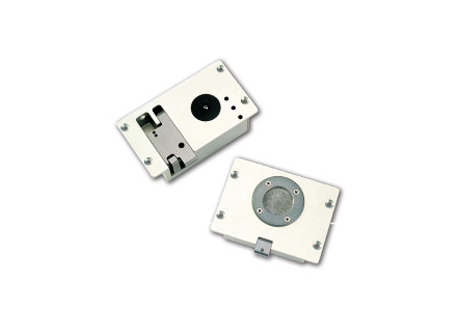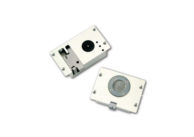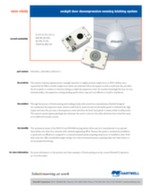Back
The aviation industry experienced an overnight transition to highly-secured cockpit doors in 2002. Airlines were required by the FAA to install cockpit doors which can withstand 300 joule impacts as well as small arms fire, yet allow the door panels to continue to function during a cockpit decompression event. As security increasingly becomes an issue internationally, a decompression-sensing latching system that is easy and cost-efective to install is mandatory.
Through the process of Solutioneering® and working closely with several door manufactures, Hartwell designed two mechanical decompression latch solutions with built-in reservoirs that would enable panels to withstand the high impact and arms fire, yet sense a decompression event and allow the latch (and panel) to release within 4 milliseconds. The reservoir system (patent-pending) also eliminates the need to vent into the cabin which has been viewed by many as an additional security concern.
IThe mechanical nature of the HA1013 and HA1044 sensing latches allows any door manufacturer to incorporate these latches into their door structure with minimal engineering effort. Because the system is mechanical, installation is quick and cost-effective as compared to a solenoid-actuated system requiring many hours of installation time. Both latch series also offer considerable weight savings over solenoid-actuated systems requiring relays and other devices to ensure proper functioning.
Cockpit door decompression-sensing latching system
The Problem
The aviation industry experienced an overnight transition to highly-secured cockpit doors in 2002. Airlines were required by the FAA to install cockpit doors which can withstand 300 joule impacts as well as small arms fire, yet allow the door panels to continue to function during a cockpit decompression event. As security increasingly becomes an issue internationally, a decompression-sensing latching system that is easy and cost-efective to install is mandatory.
The Solution
Through the process of Solutioneering® and working closely with several door manufactures, Hartwell designed two mechanical decompression latch solutions with built-in reservoirs that would enable panels to withstand the high impact and arms fire, yet sense a decompression event and allow the latch (and panel) to release within 4 milliseconds. The reservoir system (patent-pending) also eliminates the need to vent into the cabin which has been viewed by many as an additional security concern.
The Benefits
IThe mechanical nature of the HA1013 and HA1044 sensing latches allows any door manufacturer to incorporate these latches into their door structure with minimal engineering effort. Because the system is mechanical, installation is quick and cost-effective as compared to a solenoid-actuated system requiring many hours of installation time. Both latch series also offer considerable weight savings over solenoid-actuated systems requiring relays and other devices to ensure proper functioning.











